If your small business website, niche site or personal blog isn’t making sales, then you haven’t got an eCommerce business.
Shopping online is now a fact of life for more than 2 billion people, but they’ve got plenty of choice in an increasingly crowded marketplace.
So, it’s essential that you tailor your website and product pages so visitors choose to shop with you, and you make those all-important sales. In this guide, you’ll learn how to drive eCommerce sales by increasing site traffic, improving product pages, boosting conversions, and winning customer loyalty.
Understanding the eCommerce Market
Before we get to the tips, let’s explore the eCommerce market.
What is eCommerce?
eCommerce is buying and selling products online and paying for them digitally. eMarketer estimates that eCommerce will be a $5 trillion global market by the end of 2021.
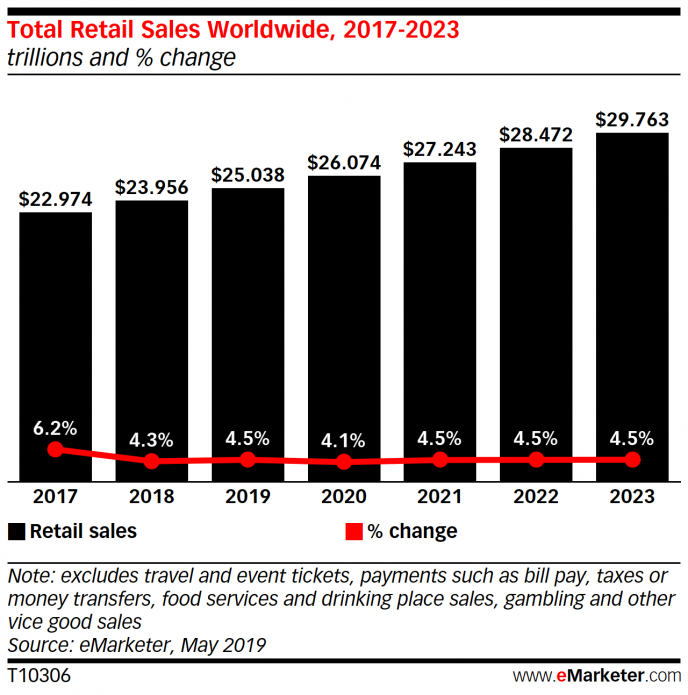
Typically we think of eCommerce as business to consumer (B2C) sales, such as when people buy products online from Amazon or their local supermarket. Indeed, Amazon is usually near the top or at the top of any list of the biggest eCommerce retailers, alongside Ali Baba, JD.com and eBay.
Beyond B2C Sales
There are other types of eCommerce, however, including:
- Business to business (B2B) sales – such as when a software company like Oracle provides database management for businesses
- Consumer to consumer (C2C) sales – such as when people use auction sites like eBay to sell items to each other
- Consumer to business (C2B) sales – such as when you sell your old phone or laptop back to the company you bought it from
Some companies combine eCommerce types; this is sometimes called business to many (B2M). For example, your insurance company, local lighting company, or online back-up supplier likely target businesses and consumers.
Popular eCommerce Verticals
You can buy almost anything online. The most popular verticals vary by location, however, as Simtech Development reveals. Here are a few examples:
- In the U.S., clothing and consumer electronics are leading verticals
- In Australia, fashion, electronics and furniture lead the way
- Across Europe, clothing and footwear are the most popular verticals
- Latin America favors fashion and electronics
- India mostly buys electronics and accessories online
Tips to Increase eCommerce Sales
Whichever vertical you’re in, the following tips will help you boost sales.
1. Increase Website Traffic
More traffic equals more potential customers, so boosting traffic is a good starting point for improving site revenue. Your strategy should encompass these three key pillars:
- Create good content
- Make it easy for people to find
- Promote that content to attract the right people
In terms of marketing, the hard sell is out. Content marketing is in. Great content meets your audience’s needs, establishes your expertise and authority, and keeps people coming back. Think helpful, relevant content, and you’re on the right track.
If you want people to find your content, use eCommerce SEO to help them. As we say in our lead generation guide, this means having a strategy for keywords and linking, while writing for humans.
Once you have high-quality content, you can attract your audience with brand awareness campaigns. According to DataReportal, 25% of people discover brands via website promotions; that’s a number you can’t ignore.
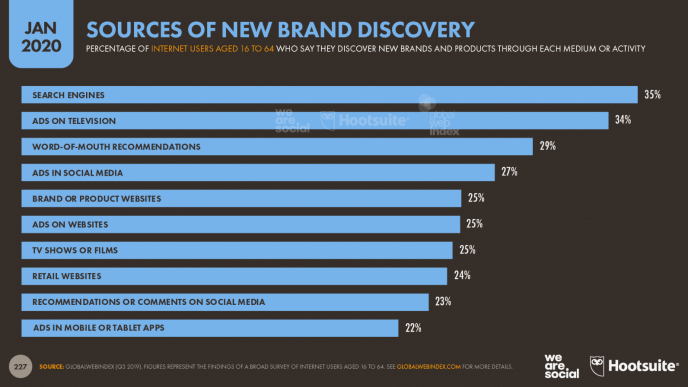
You can use Taboola to run eCommerce native advertising campaigns on websites, as well as mobile native advertising campaigns. This helps you to:
- Reach potential customers who don’t yet know about you
- Offer value and entice them to connect with you, often via email marketing
- Guide them to decide to buy from you
And, you can use Taboola Trends to figure out which creative is most effective in which verticals. Across all markets, for example, images without text achieve a higher click-through-rate, and drive more traffic to your eCommerce site.
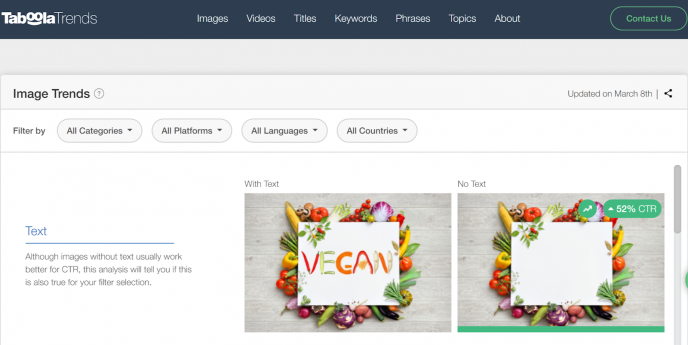
While in the U.S., videos with color significantly outperform black and white videos.
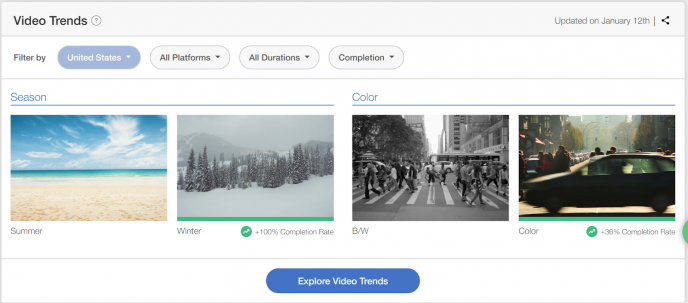
2. Structure Product Pages for Easy Selling
Some people come to your site ready to buy. This is where a well-structured site and product pages help. Ideally, your site will have easy to understand navigation labels (using everyday language), and an easy way to search. You can also implement breadcrumb navigation to help people find their way around your site and get back home at any time.
Apart from this, it’s essential to improve your product pages with:
- Unique and helpful product descriptions that answer customers’ questions
- Copy that highlights benefits, and not just features
- Crisp product images showing products from every angle
- Product videos that improve trust
- Social proof, in the form of customer reviews
Ideally, your product pages will offer consumers multiple options to act. In addition to an add-to-cart button, the best product pages include ways to see different product options or customizable products.
This product page from Best Buy is a good example. It includes photos, breadcrumb navigation, alternative products, links to reviews and answered customer questions, plus an incentive offer.
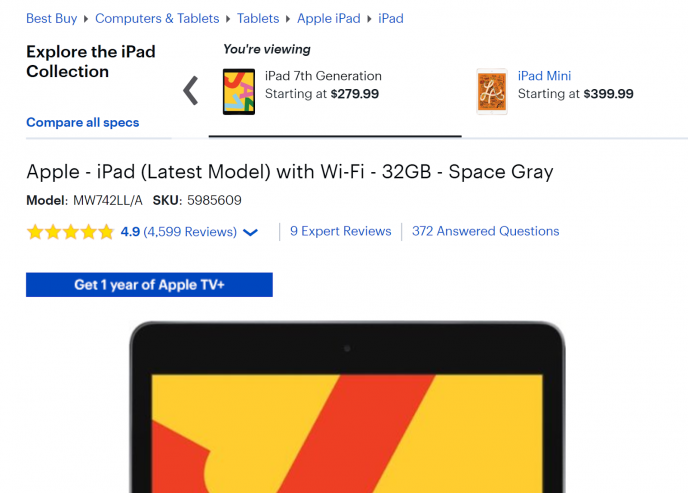
3. Convert Customers
Converting customers requires some other techniques. With more people now using mobile devices for shopping, make sure your site works on mobile from the time people land on it right through to the checkout. Otherwise, potential customers could abandon your site before buying anything.
Know your audience so you can tailor their shopping experiences. Taboola’s Data Marketplace helps you to understand audience trends – both online and offline – so you can target your product copy and get their attention.
Offer incentives and bundles to make your products more appealing, and include a clear call-to-action to get people to commit.
Add different payment options to your site, so there’s less chance of customers leaving because their favorite option isn’t there.
Don’t be afraid to go for a micro-conversion, such as signing up for your email newsletter. This helps build customer loyalty.
Sometimes driving eCommerce sales is about avoiding the pitfalls that prevent them. Recent cart abandonment statistics show that people leave websites when:
- They discover unexpected shipping costs
- The sites and checkout are confusing
- They have to create an account
- They have concerns about payment security
- They can’t find a coupon
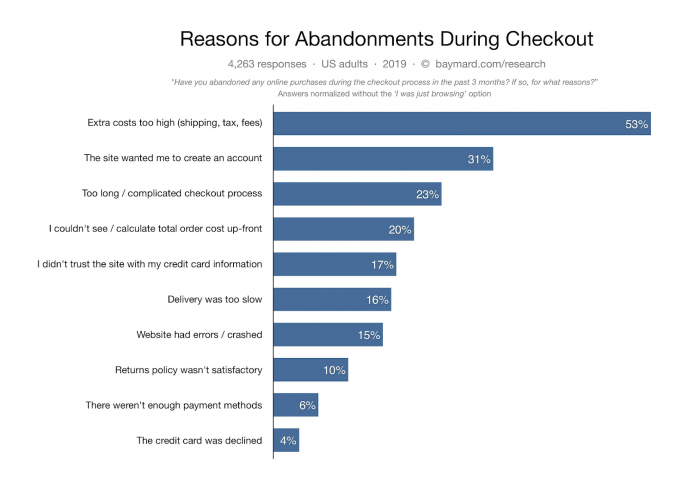
Addressing these areas can make your site work better for visitors, and lead to more conversions and sales.
4. Build Customer Loyalty
While it’s important to get that first sale from a customer, it’s even more crucial to convince first-time customers to become loyal, repeat customers.
Research from Adobe shows that while repeat customers make up only 8% of visitors, they’re responsible for 40% of revenue. Repeat customers are easier to sell to, and they spend more money, with revenue-per-visit three to five times higher than for a one-off shopper.
Tips for creating customer loyalty include:
- Stay in touch with past customers with email marketing, and offer subscriber deals and incentives
- Get personal, and tailor your messages to their individual needs
- Use video to create positive emotions about your brand
- Engage your customers via your social media platforms, and use Taboola’s tools to increase content visibility and engagement
- Surprise and delight them with excellent customer service
There’s no doubt that increasing traffic to your site, improving product pages, boosting conversions, and fostering customer loyalty helps increase eCommerce sales.
But there’s one final tip to bring everything together. Omnichannel interactions are now the norm, with customers connecting with eCommerce retailers on a number of devices. To avoid losing sales, make sure customers can have a seamless experience wherever they connect with you.